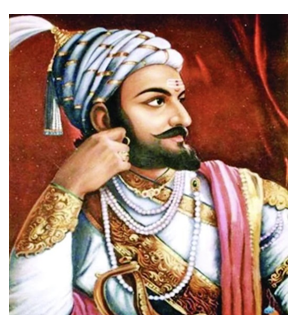

Context
In a significant development, the UK authorities have agreed to return the iconic 'waghnakh,' a dagger shaped like tiger claws used by Maratha king ChhatrapatiShivajiMaharaj.
- The small weapon is currently part of London's Victoria and Albert Museum.
About
- The 'waghnakh,'(Tiger Claws) an artifact made of steel with four claws mounted on a bar and two rings for the first and fourth fingers.
- This weapon holds historical significance as it was used by ShivajiMaharaj to kill Afzal Khan, the general of the Bijapur sultanate in 1659.
- It was designed to slash through skin and muscle.
- It holds a special place in the history for the people of Maharashtra.
- Its return symbolizes a significant milestone in the state's cultural legacy and the reverence it holds for its iconic leader, Chhatrapati Shivaji Maharaj.
Chhatrapati Shivaji Maharaj:
- He was born on 19th February 1630 at Shivneri Fort in District Pune in the present-day state of Maharashtra.
- He was born to Shahaji Bhonsle, a Maratha general who held the jagirs of Pune and Supe under the Bijapur Sultanate, and Jijabai, a pious woman whose religious qualities had a profound influence on him.
- Shivaji was not named after Lord Shiva. His name was derived from the name of a regional deity – ‘Goddess Shivai.’
- Contributions:
- He revived ancient Hindu political traditions and court conventions and promoted the usage of Marathi and Sanskrit, rather than Persian, in court and administration.
- India's first-ever navy in the modern era was built by Shivaji to protect the coast of Maharashtra.
- He established a competent and progressive civil rule with the help of disciplined military and well-structured administrative organizations.
|
This year is been celebrating 350 years of the coronation ofChhatrapati Shivaji Maharaj. |
|
The AshtaPradhan (Marathi: Council of Eight) set up by the ChhatrapatiShivajiMaharaj 1. Peshwa (Prime Minister ) 2. Amatya (Finance Minister ) 3. Shurunavis ( Secretary ) 4. Waqia-Navis (Interior Minister ) 5. Sar-i-Naubat (Commander-in-Chief ) 6. Sumant (Foreign Minister) 7. Nyayadhish (Chief Justice ) 8. Panditrao ( High Priest) |
- He innovated military tactics, pioneering non-conventional methods (guerrilla warfare) and leveraged strategic factors like geography, speed, and surprise.
- He focused on pinpoint attacks to defeat his larger and more powerful enemies.
- A brave and genuinely secular ruler, he respected women and cared for the downtrodden and farmers.
- He died on 3rd April 1680.
Who was Afzal Khan?
- He was a 17th-century commander of the AdilShahi dynasty of Bijapur.
- With ChhatrapatiShivaji’s rise and increasing control of the region, Afzal Khan was seen as the man to subdue him in the Deccan.
- Khan put together a force of 10,000 cavalry and marched from Bijapur to Wai, plundering Shivaji’s territory along the way.
- Shivaji called a council of war at the fort of Pratapgarh, where most of his advisers urged him to make peace.
- During the meeting, an embrace between the two turned into an attack in which Shivaji emerged victorious. This was followed by a rout of the Adilshahi army at the hands of the Marathas.
- As per Maratha sources, Khan’s remains were buried at the fort and a tomb was constructed on Shivajij’s orders.
Important Battle:
|
Battle of Pratapgad, 1659 |
Fought at the fort of Pratapgad near the town of Satara, Maharashtra, between the forces of the Maratha king ChhatrapatiShivajiMaharaj and the Adilshahi general Afzal Khan. |
|
Battle of PavanKhind, 1660 |
Fought at a mountain pass in the vicinity of fort Vishalgad, near the city of Kolhapur, Maharashtra, between the Maratha SardarBajiPrabhuDeshpande and SiddiMasud of Adilshahi. |
|
Sacking of Surat, 1664 |
Fought near the city of Surat, Gujarat, between ChhatrapatiShivajiMaharaj and Inayat Khan, a Mughal captain. |
|
Battle of Purandar, 1665 |
Fought between the Mughal Empire and Maratha Empire. |
|
Battle of Sinhagad, 1670 |
Fought on the fort of Sinhagad near the city of Pune, Maharashtra between TanajiMalusare, a commander of Maratha ruler ShivajiMaharaj and UdaybhanRathod, fortkeeper under Jai Singh I who was a Mughal Army Chief. |
|
Battle of Kalyan, 1682-83 |
Bahadur Khan of the Mughal Empire defeated the Maratha army and took over Kalyan. |
|
Battle of Sangamner, 1679 |
Fought between the Mughal Empire and Maratha Empire. This was the last battle in which the Maratha King Shivaji fought. |




